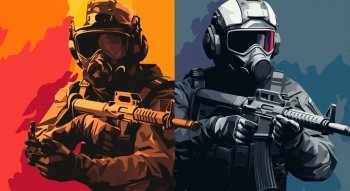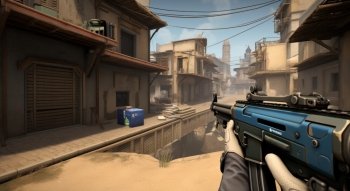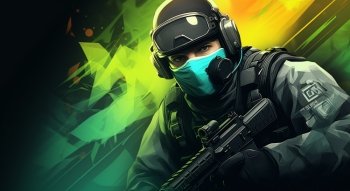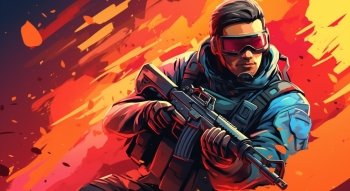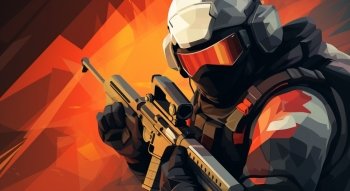How to Participate in Major CS:GO Tournaments — Start by Qualifying
Contents
- How to Participate in Pro CS:GO Tournaments
- How to Get Qualified for CS:GO
- 1. Register on FACEIT or ESEA
- 2. Learn the Participating Process
- Start from Local Competitions to Know the Procedure
- The Grade of Official CS:GO Tournaments
- Find All the Info About the Event
- 3. Choose the Event from the Higher Tier
- Qualifying Stages
- 4. The Process of Qualification
- 5. Repeat Steps 3 to 5 (If Felt Enough Joy and Excitement)
- What Qualifier Platform is Better?
- Conclusion
- FAQ
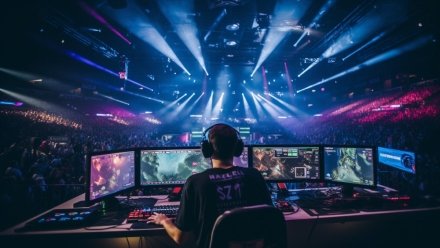
Spent numerous hours polishing your aim and movement in Counter-Strike: Global Offensive? Want to test your skills in real tournaments and sign your first contract but don’t know how to start participating in professional CS:GO matches?
Answers to those questions cannot be short due to tons of aspects that should be considered. Still, we’ve gathered the most vital information and useful links to help start this long and challenging path. ‘S1mple,’ ‘ZywOo,’ and ‘NAF’ also wondered how to participate in CS:GO tournaments years ago, while now they explain in interviews that everything is possible.
Note: Since this guide is for a wider audience who is interested in how to take part in CS:GO major matches, some steps may seem obvious for semi-pros.
How to Participate in Pro CS:GO Tournaments
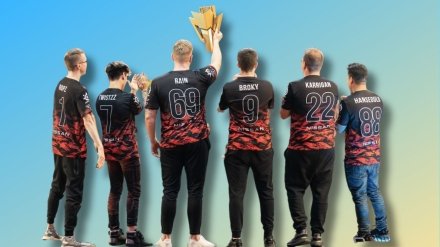
If you decide to move towards professional Counter-Strike, you need the following things to be done:
- find regular teammates;
- learn the proper in-game communication;
- establish regular practicing and training sessions (that is an obligatory requirement for every pro);
- analyze the reaction of you and your teammates on the victories and defeats (psychological aspects are critical in every team, and coping with them starts at the lower stages);
- participate in a few qualifiers for tournaments.
However, the issue of how to take part in CS:GO open qualifiers deserves a separate section, so let's get down to it.
How to Get Qualified for CS:GO
Usually, you don't need to qualify for local or some small tournaments held by third parties. However, if you're interested in a professional CS:GO career, you need to be ready to play and win regional qualification games first. When you win several of them, you will be invited to participate in Premier tournaments held by Valve and challenge your favorite teams like NAVI, Cloud9, or Team Vitality. Therefore, you need to know how to find open CS:GO qualifiers or how to participate in open qualifiers. And here, we provide answers for both questions with practical steps and useful links.
1. Register on FACEIT or ESEA
ESEA and FACEIT are the most popular gaming platforms that gathered a community of pros who love it for a good anti-cheat system in the online sector. For future stars, it is an excellent opportunity to polish skills, participate in the local FACEIT events, and be a few clicks from C- and B-tier tournaments. Another feature is the chance to try local events even with a free subscription and learn how to qualify for CS:GO competitions without investing a penny.
So, the guide on how to qualify for CS:GO events starts with registering on FACEIT or ESEA, while the issue of which of them is better will be discussed below.
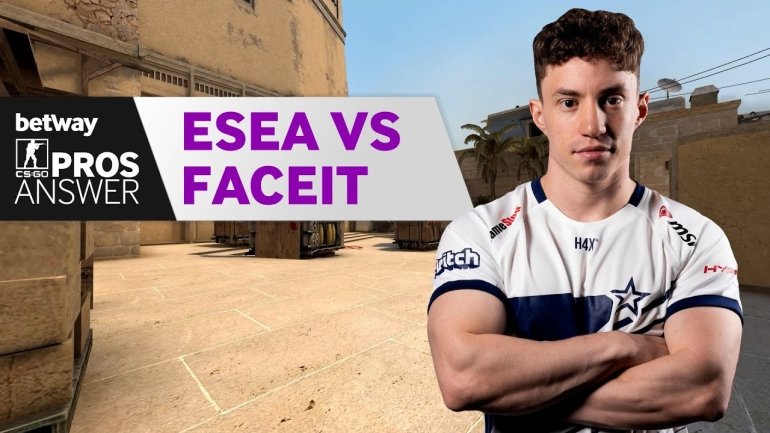
2. Learn the Participating Process
Start from Local Competitions to Know the Procedure
After registering on ESEA or FACEIT, you can look through FACEIT Tournaments and competitive events held on ESEA servers. Most are free to participate (paid subscription gives some extra bonuses, but not for tournaments), and you should learn the typical procedure. The process repeats from event to event with minor changes, with the following info to be basic:
- Team size (1v1, 2v2, 5v5).
- Skill level (minimum FACEIT level or Elo points).
- Format (rounds amount, single/double elimination, BO1/BO3, etc.).
- Check-in date and time (when you should confirm your participation, usually about an hour before the start of the first match).
- Starting date and time (the time of the first clash).
- Prize pool (it can be FACEIT points or real cash prizes).
You can join the event if your account fits all the requirements — all five players added to 5v5 and your FACEIT level is acceptable. After that, you just need to attend the check-in period and start your long race. It’s better to start from the small tournaments on FACEIT or ESEA to learn the basics that can be used for participation in bigger ones.
The Grade of Official CS:GO Tournaments
Generally, CS:GO competitions can be divided into five levels:
- S-Tier. The premier tournaments of Valve with prize pools of $250K+, often played in LAN format. Here, top teams and players compete for the chance to become the champion of the year. You need to win closed qualifiers or get an invitation (for top teams only) to get there.
- A-Tier. Major events that usually play the role of closed qualifiers with rewards from $100K to even $500K and are generally organized online. To try your chances here, you need to be the winner of the regional open qualifiers.
- B-Tier. These minor tournaments are your starting point to the top league. Winning one of those opens the road to A- and S-tier events. Prize money varies from $20K to $100K, depending on the organizers and their authority.
- C-Tier. Small events organized by local authorities with prize pools up to $50K.
- Local Level. The smallest tournaments, often with non-material rewards, e.g., skins or FACEIT points. Most FACEIT and ESEA events are from this category.
Find All the Info About the Event
When you choose the CS:GO event, be sure to check the dates for the open qualifications registration and when the tournament starts. For a comprehensive overview of upcoming matches and events, you can refer to our cs go match schedule. Also, pay attention to the requirements as they may vary: what accounts are needed, regional info confirmations/approvals, and some specific info. The most reliable way is to visit the official webpage of the event organizer, but it can also be found on Liquipedia or ESEA/FACEIT appropriate pages (depending on which one will be a technical partner for the qualifying process).
3. Choose the Event from the Higher Tier
After you’ve tried your forces at the local level several (dozens) times, and you feel the power to become a part of something bigger, you can try to participate in B-tier open qualifiers. Those can be selected from the HLTV’s events list, where the top teams and biggest prize pools are traditionally covered. An alternative is the Liquipedia qualifiers & events table, which is updated by the community and includes B- and C-tier events with helpful info like qualifier dates.
Qualifying Stages
You should also understand how to become a participant in CS:GO tournaments and what are the qualifying stages. For the S to B tiers, the qualification usually has a few steps, with different dates for each:
- One or a few open qualifiers (B-tier). Those are played during one or two days at a proven platform, usually online BO1 (best-of-one) matches, and with region binding for stable ping. At this stage, most of the teams are sorted out, even for the Major.
- Closed qualifier (A-tier). Highest-ranked teams by the results of open quals (it can be one, two, or even four) + invited popular teams fight with each other, typically in online BO3 matches; can be with or without regional binding.
- The tournament itself (S-tier). An offline/LAN event, if it is prestigious enough, with a separate format for the group stage (offline studio games) and playoffs (offline big-stage matches with fans in the stands).
Since the initial target is to participate in the open qualifiers, you have to scan all the info about this stage, inform teammates, and don’t miss check-in time and the first game.
4. The Process of Qualification
Yes, this point deserves special attention in the guide on how to participate in CS:GO open qualifiers, as this stage is the hardest. Thus, your team can have up to 5 or 6 single-elimination best-of-one matches, where the map veto with unknown teams is generally a lottery. Also, BO1 games often lead to many unexpected results, and plenty of big teams often sink at this stage. At the same time, being an underdog in open quals means you can prepare 2–3 maps and try to surprise anyone.
5. Repeat Steps 3 to 5 (If Felt Enough Joy and Excitement)
We guess the first few attempts won’t be successful for your team, but here you should understand if this path is worth it. Some teammates can start disbelieving the chances of getting to the closed qualifiers, and you should be ready for such scenarios. Of course, that is more of a pessimistic scenario, while most young lions typically feel the adrenaline rush and continue with double energy.
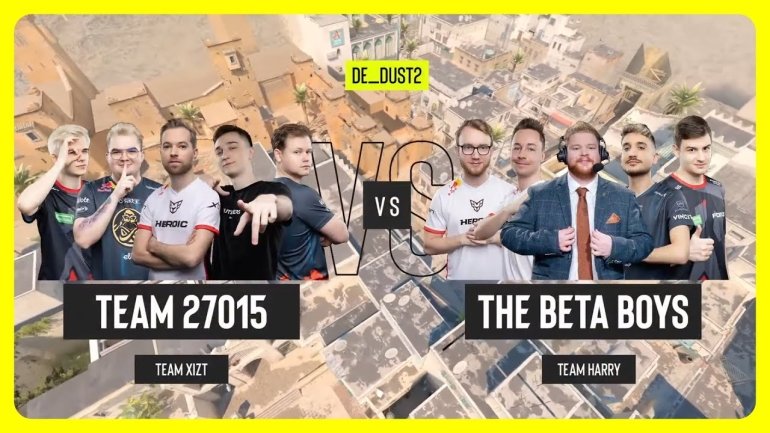
What Qualifier Platform is Better?
We can highlight three platforms for CS:GO qualifiers:
1. FACEIT
FACEIT is one of the most popular gaming platforms in the CS:GO community since it provides a reliable anti-cheat for our favorite game in the form of additional PC apps. It also has separate servers in all parts of the world with a 128-tick rate, which is essential for a more reliable gaming process, especially a competitive one. Since the in-game hacking control is pretty weak, many players, including pros, have already registered on FACEIT to access fairer gameplay.
2. ESEA
Another famous name in the professional CS:GO community is ESEA, which is an official provider of the open qualifiers for IEM and ESL tournaments. While the platform also has paid and free subscriptions, they allow participating even in the S-tier events without extra payments. Interestingly, the 46th season of the ESEA League will run on FACEIT, which looks like a great step towards wider event coverage. We’ll unlikely see a full-scale merger of the operators, but useful interchange can lead to better anti-cheat and other perks.
3. Local Offline Operators
There are dozens of other websites, including international online platforms, that want to be like ESEA or FACEIT. However, their reputation isn’t always reliable enough, and scandals like the CIS RMR 2021 organized by EPIC League can occur. You can also play competitive CS offline in the Esports club, which can host events at the city’s level with a nice prize fund. So, the CS:GO tournaments’ life exists outside of ESEA and FACEIT, but it isn’t as reliable and popular to dedicate much time to it.
Conclusion
So, what do you need to participate in CS:GO tournaments? A simple and cheap procedure involves registration on FACEIT or/and ESEA platforms, which provide impressive online anti-cheat. That is a vital flag for both organizers and participants that the competition will be fair enough. Both platforms also have simple and easy instructions and rules on joining an event and learning the procedure, at least.
If your Counter-Strike playing level is enough to fight tier-3 teams in the open qualifiers, you can expect to be invited to closed qualifiers or even some A or B-tier tournaments. In this regard, you can follow Liquipedia or HLTV’s pages with events and plan your training sessions and widen a map pool.
FAQ
No, you can participate in most A and even S-tier events without a penny invested. Both FACEIT and ESEA allow free participation in such tournaments, and you just need to follow some other minor requirements like being there on time for check-in with a declared beforehand team.
To participate in the most popular CS:GO tournaments, you don’t need any confirmed rank or level — only an account on one of the platforms with a reliable online anti-cheat system.
